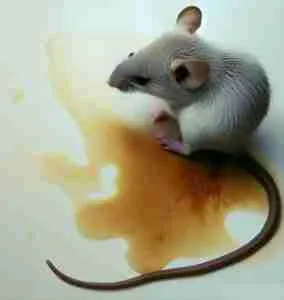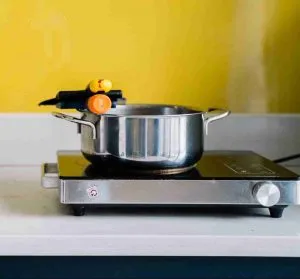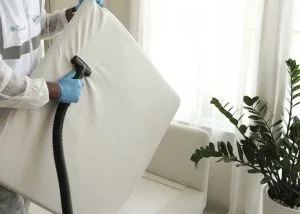So why should you clean your motorcycle exhaust? Well, it’s simple. A clean exhaust can improve your fuel efficiency and engine performance, which leads to a better ride. It’s the equivalent of breathing freely versus trying to breathe through a straw. Also, routine cleaning extends the lifespan of your motorcycle. It keeps the bike parts in their best condition, ensuring they don’t wear out quickly.
Ever noticed how stunning a bike looks with shiny, gleaming exhaust pipes? That’s another reason why you should regularly clean your exhaust pipes. They not only work better but also look better. So, for both the sake of your motorcycle’s performance and aesthetics, cleaning the exhaust pipes should be on your maintenance checklist.
Contents
ToggleWhen to Clean Your Motorcycle Exhaust

Knowing why to clean your motorcycle exhaust is one thing. The next question is – when? Like many aspects of motorcycle maintenance, the frequency of cleaning your exhaust can depend on several factors.
If you’re an everyday rider, your exhaust will accumulate dirt and grime more quickly. So, you’ll need to clean it more frequently. However, if you only ride your motorcycle occasionally, you might only need to clean your exhaust once every few months.
Additionally, the type of riding you do plays a significant role. If you’re into off-road biking, the muddy trails might dirty your exhaust quicker. On the other hand, if you only ride in the city, your exhaust might stay clean for longer.
Finally, the environment you ride in also impacts how often you should clean your exhaust. If you live in a coastal area, the salty air can accelerate rusting, necessitating more frequent cleaning. Similarly, if you ride in areas with a lot of dust or sand, your exhaust might need cleaning more often.
The key is to inspect your exhaust regularly. If it appears dirty or sounds different than usual, it’s time for a clean.
Tools and Materials Needed
Before you get down to business, it’s essential to gather the necessary tools and materials. Here’s what you need to clean your motorcycle exhaust:
- Bucket or container: You’ll need this to mix your cleaning solution and for soaking smaller parts of the exhaust.
- Caustic soda or acid: These chemicals are effective for breaking down stubborn dirt and grime.
- White vinegar: This is a milder alternative to caustic soda or acid. It’s excellent for tackling surface rust and restoring shine.
- Water: This will be used for rinsing off the cleaning solution and any loosened dirt.
- Nuts, bolts, or other agitators: These are great for helping to scrub away stubborn grime inside the exhaust pipe.
- Wired scrub or cleaning brush: You’ll use these tools to scrub away the dirt and grime on your exhaust pipe.
- A hose or water pipe: This is useful for rinsing off the cleaning solution.
- Metal polish: This will restore the shine to your exhaust after cleaning.
Make sure you also have protective gear such as gloves and goggles. Safety should always be your number one priority.
Techniques for Cleaning Your Motorcycle Exhaust
Now that you have all your tools and materials ready, it’s time to get down to the actual cleaning. Here are some techniques that you can use to clean your motorcycle exhaust:
- Using caustic soda or acid: This technique is particularly powerful for tackling hardened dirt, grime, and rust. Here’s how you go about it:
- Begin by mixing the caustic soda or acid with water in a large bucket. It’s essential to follow the manufacturer’s instructions for the correct ratio to ensure optimal cleaning without risk of damage to the exhaust or harm to yourself.
- With your solution prepared, it’s time to immerse your exhaust pipe in it. If the exhaust pipe is still attached to the motorcycle, you can use a sponge or cloth soaked in the solution to thoroughly coat the exhaust.
- Now, patience is key. Allow the exhaust pipe to soak in the solution for a few hours. During this time, the caustic soda or acid works its magic, breaking down even the most stubborn grime.
- After the soaking period, arm yourself with your wire brush or wired scrub and scrub away. Don’t be afraid to apply a bit of elbow grease – the solution should have loosened the grime enough to make this task straightforward.
- Once you’ve scrubbed every inch of the exhaust, it’s time to rinse. Use a hose or water pipe to wash away the cleaning solution and the now-loosened grime.
- Finally, dry the exhaust pipe thoroughly. Any residual moisture could lead to rusting, so make sure to get into all the nooks and crannies.
- Using vinegar: For milder cleaning needs, vinegar is a more eco-friendly and less aggressive alternative. Here’s how to use it:
- First, fill a spray bottle with white vinegar. The spray bottle allows you to apply the vinegar precisely where it’s needed.
- Spray the vinegar generously onto the exhaust pipe. Make sure to cover the entire surface.
- Allow the vinegar to sit for a few minutes. The acidity of the vinegar will start breaking down the surface grime and rust during this time.
- Now it’s time to get scrubbing. Use your brush or wired scrub to work off the loosened dirt and rust.
- Rinse the exhaust pipe thoroughly with water. This will wash away the vinegar and any residual dirt.
- Lastly, just like the previous method, ensure the exhaust pipe is completely dry to prevent rusting.
Remember, safety and responsible practices are paramount. Always ensure you’re working in a well-ventilated area when using chemicals and dispose of your cleaning solutions responsibly to protect the environment. With these techniques, your motorcycle exhaust will be clean, shiny, and ready to roar once again.
Achieving a Shiny Finish on Exhaust Pipes
After all the hard work of cleaning your motorcycle’s exhaust, you’d want it to shine like a diamond, wouldn’t you? Achieving that glorious gleam is simpler than you might think.
Firstly, once the exhaust is clean and dry, grab some high-quality metal polish. Make sure the polish is suitable for the material your exhaust pipe is made of. Apply a generous amount of polish to a soft, clean cloth and rub it onto the exhaust pipe using a circular motion. This helps the polish penetrate any small scratches and start to bring out that brilliant shine.
Work your way around the pipe, adding more polish as necessary. Once the entire pipe is covered, let it sit for a few minutes. Then, using a fresh cloth, buff off the polish. You should start to see a mirror-like finish emerge.
For extra shine and protection, consider applying a sealant after the polish. This will keep your exhaust pipe shining for longer and protect it from elements that can dull its shine.
Removing Tarnish from Motorcycle Exhaust
Tarnish is the bane of any shiny motorcycle exhaust. It robs your bike of its aesthetic appeal and, over time, can lead to deeper problems like corrosion. But don’t despair – tarnish can be tackled!
The method of removing tarnish is similar to general cleaning. You can use vinegar, which is a mild acid, to break down the tarnish. Spray the vinegar onto the exhaust pipe and let it sit for a few minutes, then scrub the tarnish away using a wire brush or wired scrub.
For more stubborn tarnish, a commercial metal cleaner or polish may be necessary. Make sure to choose a product that’s safe for your exhaust’s material. Apply it according to the manufacturer’s instructions, then scrub away the tarnish.
Remember, always rinse and dry your exhaust thoroughly after cleaning to prevent any new tarnish from forming.
The Roles and Responsibilities of Motorcycle Exhaust
The exhaust system of a motorcycle might just look like a pipe, but it’s a crucial component that plays several key roles:
- Removing Exhaust Gases: The most obvious function of the exhaust is to direct the gases produced by the engine’s combustion process away from the engine (and the rider). This helps to keep the engine running smoothly and prevents the potentially harmful gases from causing damage or being inhaled.
- Reducing Noise: The exhaust system also acts as a silencer. Without it, the noise produced by the engine’s exhaust gases escaping would be excessively loud.
- Improving Performance: A well-designed exhaust system can help to improve engine performance. It does this by creating a vacuum effect known as ‘scavenging’, which helps to draw out exhaust gases more efficiently, allowing fresh air-fuel mixture to enter the engine more easily.
- Enhancing Fuel Efficiency: By helping the engine to expel exhaust gases efficiently, the exhaust system can also improve your bike’s fuel efficiency.
- Adding Aesthetic Appeal: Last but not least, a clean, shiny exhaust adds to the overall aesthetic appeal of your bike.
Tips and Tricks
Cleaning your motorcycle exhaust doesn’t have to be a chore. Here are some tips and tricks that can make the process easier:
- Use a motorcycle cover when not in use: An ounce of prevention is worth a pound of cure, as the saying goes. A motorcycle cover can protect your bike from dust, dirt, and environmental elements, preventing your exhaust pipe from getting dirty in the first place. Lordhomie.com has an excellent selection of covers to suit different bikes and budgets. Check out their article on the Best Motorcycle Cover for some top picks.
- Use a wired scrub or cleaning brush: These tools are your best allies when it comes to scrubbing away stubborn dirt and grime. The best part? They do a fantastic job without scratching your exhaust pipe, keeping it shiny and spotless.
- Finish off with a metal polish: Once you’ve completed the heavy lifting of cleaning, don’t forget to apply a metal polish. This final flourish will restore your exhaust’s original shine, making it look as good as new.
What Not to Do
Finally, it’s important to know what not to do when cleaning your motorcycle exhaust. Here are a few things to avoid:
- Don’t use harsh chemicals that can damage the exhaust. Stick to the recommended cleaners.
- Don’t use abrasive materials that can scratch the surface of your exhaust pipe.
- Don’t forget to use protective gear when handling chemicals.
- Don’t forget to dispose of your cleaning solution responsibly.
- Don’t rush the process. Take your time to ensure you do a thorough job.
FAQ
How do you clean carbon out of a motorcycle exhaust?
To clean carbon deposits from your motorcycle exhaust, you can use a mixture of caustic soda and water. Soak the exhaust pipe in this solution, let it sit for a few hours, and then scrub with a wire brush. Ensure to rinse and dry thoroughly after cleaning.
How do you clean black off exhaust?
Black marks on your exhaust can be cleaned using white vinegar or a commercial cleaner. Spray the cleaner onto the exhaust, let it sit for a few minutes, then scrub off the black stains. Always remember to rinse thoroughly and dry after cleaning.
Is vinegar safe to use on all types of exhaust pipes?
White vinegar is generally safe for most materials, but it’s always best to spot test on an inconspicuous area first. If you notice any adverse effects, it might be best to use a commercial cleaner designed for your specific exhaust material.
How often should I polish my motorcycle exhaust?
There’s no hard and fast rule, but a good practice is to polish your exhaust whenever you notice it starting to lose its shine. Regular polishing after cleaning can help maintain a gleaming finish and protect against the elements.
How do I dispose of cleaning solutions safely?
Check local regulations for disposal of cleaning solutions. Some may require neutralization before disposal, while others may need to be taken to a waste disposal facility. Never pour chemicals down the drain as it can harm the environment.
And Lastly…
Remember, proper maintenance of your motorcycle, including regular cleaning of the exhaust pipe, can enhance its performance and lifespan. So, roll up your sleeves and get to it! And when you’re done, you’ll be rewarded with a shiny, gleaming exhaust pipe and a motorcycle that purrs like a kitten.
Additional Reading
For those of you who are motorcycle enthusiasts or do-it-yourselfers, here are a few more resources you might find helpful:
- Choosing the Right Drill Bit for Screw Size: If you’re taking on any DIY projects that involve screws, knowing how to select the appropriate drill bit is crucial. This article guides you on how to make the right choice.
- Opening a Locked Garage Door from the Outside Without a Key: A locked garage door with no key can be a real headache. Learn practical ways to handle such a situation in this informative piece.
- Getting Rid of Flies in Your Garage: Those pesky flies can be more than just a nuisance in your garage. Discover proven strategies to eliminate them and reclaim your space.























































